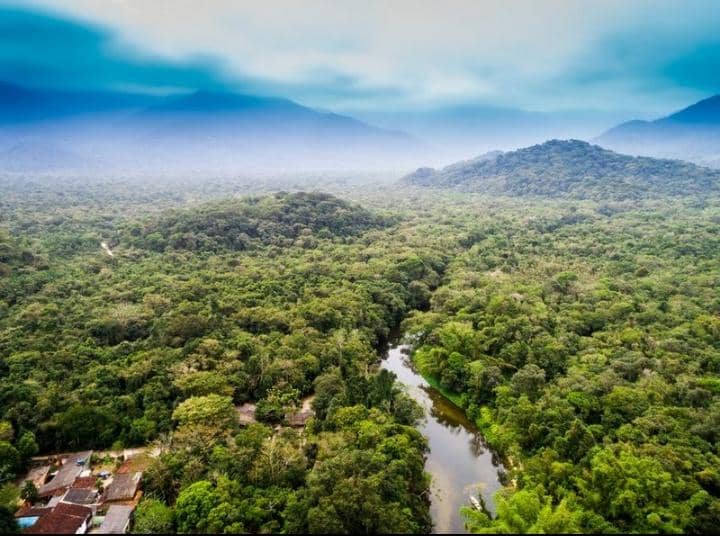The Amazon Rainforest, the largest tropical rainforest in the world, spans approximately 5.5 million square kilometers (2.1 million square miles) across South America. It is primarily located in Brazil, which contains about 60% of the forest, while the remaining portions extend into Peru, Colombia, Venezuela, Ecuador, Bolivia, Guyana, Suriname, and French Guiana.
This vast ecosystem is crucial for global biodiversity, housing around 390 billion individual trees and an estimated 16,000 species of plants, making it the richest tropical forest on Earth.
The Amazon Rainforest plays a significant role in regulating the Earth’s climate. It absorbs vast amounts of carbon dioxide, contributing to the reduction of greenhouse gases in the atmosphere.
Moreover, it produces approximately 20% of the world’s oxygen, earning it the nickname “lungs of the Earth.” The forest’s diverse habitats support about 10% of all known species, including numerous mammals, birds, reptiles, and insects.
Biodiversity in the Amazon is unparalleled, with millions of species, many of which remain undocumented. The forest is home to iconic wildlife such as jaguars, sloths, and various monkey species, alongside countless insects and plants. This incredible variety is vital for ecological balance and offers potential resources for medicine and agriculture.
Despite its importance, the Amazon faces significant threats from deforestation, primarily due to agriculture, logging, and urban expansion. Since the 1970s, approximately 20% of the rainforest has been lost, leading to concerns about irreversible damage to its ecosystem.
The ongoing deforestation not only endangers wildlife but also exacerbates climate change by releasing stored carbon into the atmosphere.
Conservation efforts are critical to preserving the Amazon Rainforest. Initiatives include sustainable land management practices, reforestation projects, and legal protections for indigenous territories.
International cooperation and awareness are essential to combat the pressures facing this vital ecosystem and to ensure that it continues to thrive for future generations.

